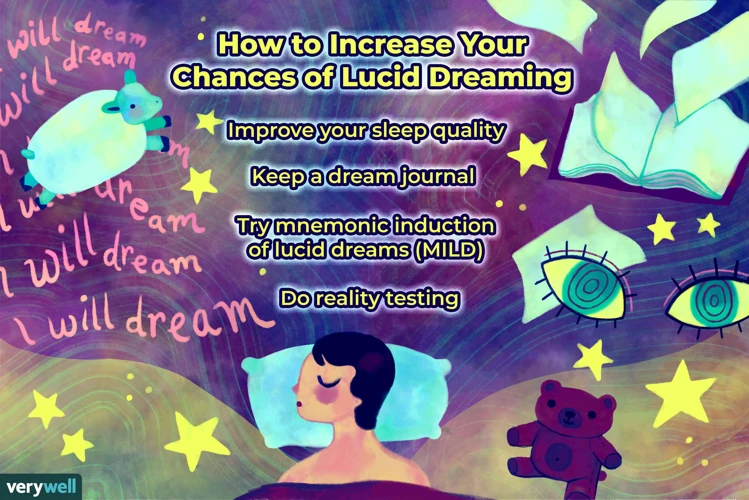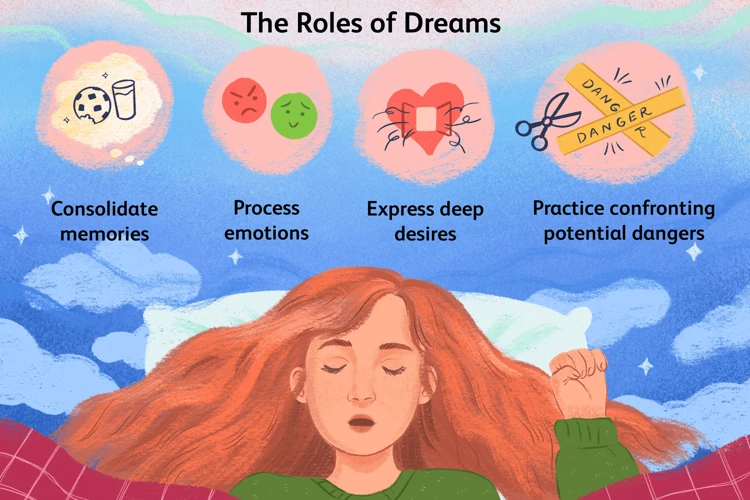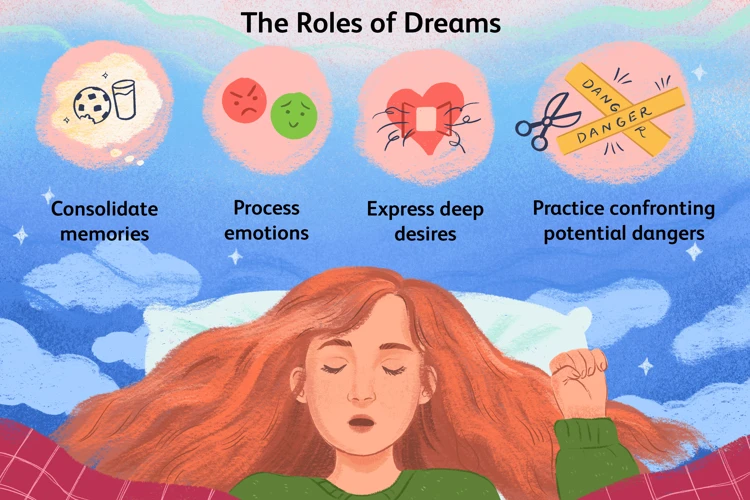Imagine a world where you have the power to turn your nightmares into empowering experiences, where you can confront your deepest fears and find healing in the realm of dreams. This captivating concept is known as lucid dreaming, a phenomenon that has sparked the curiosity of scientists and dream enthusiasts alike. Lucid dreaming allows individuals to become aware that they are dreaming while still in the midst of the dream, granting them the ability to actively participate and shape their dream experiences. Beyond its appeal as a fantastical concept, lucid dreaming holds great potential for alleviating the torment of nightmares and aiding in the recovery of post-traumatic stress disorder (PTSD). By delving into the science behind lucid dreaming, understanding the challenges of nightmares and PTSD, and exploring the techniques and benefits of lucid dreaming, we can unveil the astonishing possibilities that this phenomenon offers for harnessing the power of the mind and dreamscape.
The Science Behind Lucid Dreaming

Understanding the science behind lucid dreaming opens a doorway to the mysteries of the human mind. Researchers have found that lucid dreaming occurs during the rapid eye movement (REM) stage of sleep when brain activity is high and resembles that of waking consciousness. During this stage, the prefrontal cortex, responsible for logical thinking and self-awareness, becomes more active in individuals who experience lucid dreams. This heightened activity allows dreamers to recognize the dream state and gain control over their actions within the dream. Studies have also shown that lucid dreaming is associated with increased activation of the dorsolateral prefrontal cortex, the region responsible for working memory and decision-making. This activation contributes to the enhanced cognitive capabilities and self-reflective awareness experienced in lucid dreams. Additionally, neuroimaging studies have revealed that the production of gamma waves, linked to higher mental functioning and self-awareness, is heightened during lucid dreaming. These scientific insights into the brain mechanisms involved in lucid dreaming provide a foundation for further exploring its potential applications in various aspects of human experience, from creative problem-solving to personal growth and even PTSD treatment.
Understanding Nightmares and PTSD

Nightmares and post-traumatic stress disorder (PTSD) are deeply intertwined, both causing distressing experiences that can significantly impact an individual’s well-being. Nightmares are vivid and distressing dreams that often awaken individuals from sleep, leaving them feeling frightened, anxious, or unsettled. They can be caused by various factors, such as traumatic events, stress, anxiety, or even certain medications. Similarly, PTSD is a psychiatric disorder that occurs in individuals who have experienced or witnessed a traumatic event. It is characterized by symptoms such as intrusive memories, flashbacks, nightmares, and intense psychological distress. Nightmares are particularly prevalent in individuals with PTSD and can contribute to a cycle of fear and avoidance, as individuals may actively try to avoid sleep to escape the distressing dreams. Understanding the connection between nightmares and PTSD is crucial in order to develop effective interventions that can provide relief to those affected. By exploring techniques such as lucid dreaming, individuals with PTSD may find potential avenues for healing and overcoming the ongoing impact of traumatic experiences.
Nightmares: Causes and Effects
Nightmares can be a distressing and vivid manifestation of our deepest fears and anxieties during sleep. While the specific causes of nightmares vary from person to person, they can often be triggered by traumatic experiences, unresolved emotional conflicts, stress, or certain medications. Nightmares can have a profound impact on an individual’s well-being, causing sleep disturbances, anxiety, and even fear of falling asleep. The effects of nightmares can extend beyond the night, leading to daytime fatigue, decreased cognitive function, and impaired emotional regulation. Nightmares can also contribute to the development or exacerbation of mental health conditions such as anxiety disorders and post-traumatic stress disorder (PTSD). Understanding the causes and effects of nightmares is essential in addressing and alleviating their impact on individuals’ lives. Lucid dreaming presents an intriguing avenue for exploring the potential of gaining control over nightmares and transforming them into more positive dream experiences. By utilizing techniques such as reality testing, keeping dream journals, and employing cognitive strategies, individuals can begin to navigate the realm of their dreams and overcome the distressing effects of nightmares. Embracing lucid dreaming as a tool for personal growth and healing provides an opportunity to consciously confront and reshape the terrifying narratives that haunt our dreams. Dream journals, for example, can aid in identifying recurring themes, patterns, and triggers in dreams, allowing individuals to gain insight into the root causes of their nightmares and facilitating the development of targeted strategies for resolution. Nightmares need not be an uncontrollable source of fear; with the potential offered by lucid dreaming, they can become a gateway to self-discovery and healing.
PTSD: Symptoms and Challenges
PTSD, or post-traumatic stress disorder, is a debilitating condition that can arise after experiencing or witnessing a traumatic event. The symptoms of PTSD can vary but often include intrusive memories, flashbacks, nightmares, severe anxiety, and avoidance of triggers associated with the trauma. These symptoms can disrupt daily life, making it challenging for individuals to function and maintain healthy relationships.
One of the primary challenges of PTSD is the re-experiencing of the traumatic event through nightmares and flashbacks. Nightmares can be particularly distressing, as they vividly recreate the traumatic experience and intensify feelings of fear, helplessness, and anxiety. These nightmares can lead to insomnia, further exacerbating the negative impact on overall well-being.
Individuals with PTSD may develop avoidance behaviors in an attempt to prevent triggering memories and emotions associated with the trauma. This avoidance can limit their engagement in daily activities, social interactions, and even the pursuit of personal goals and aspirations. The constant hyperarousal and hypervigilance experienced by those with PTSD can also lead to emotional and physical exhaustion, contributing to a decreased quality of life.
Addressing these symptoms and challenges associated with PTSD requires holistic and innovative approaches. Lucid dreaming, with its potential to provide a safe and controlled space within dreams, offers unique possibilities for individuals struggling with trauma. By harnessing the power of lucid dreaming, individuals may be able to confront and process their traumatic experiences in a more controlled and supportive environment. Through this process, the intensity of nightmares can be reduced, and individuals can gain a sense of empowerment and mastery over their trauma-related fears.
Internal link: Exploring Lucid Dream Induction
The Potential of Lucid Dreaming for Nightmares

Lucid dreaming possesses immense potential as a tool for addressing the torment of nightmares. Nightmares can be distressing and can have a significant impact on an individual’s quality of sleep and overall well-being. Through lucid dreaming, individuals can not only confront their nightmares head-on but also transform them into positive and empowering experiences. The ability to become aware that one is dreaming during a nightmare opens up a realm of possibilities for taking control and reshaping the dream narrative. By utilizing lucid dreaming techniques such as reality testing, visualization, and dream control, individuals can face their fears, confront the monsters that haunt their dreams, and ultimately rewrite the script of their nighttime terrors. Lucid dreaming also offers the opportunity for individuals to gain insights into the underlying causes of their nightmares and work through unresolved emotional issues. This remarkable potential of lucid dreaming can empower individuals to reclaim their sleep, find solace in the dream world, and pave the way for personal growth and healing. By harnessing the power of lucid dreams, individuals can unravel the mysteries of their innermost fears and find newfound strength in the face of adversity.
What is Lucid Dreaming?
Lucid dreaming is a remarkable state of consciousness where individuals become aware that they are dreaming while still in the midst of the dream. It is a state of heightened self-awareness within the dream world, enabling dreamers to actively participate and even manipulate the dream’s narrative and environment. In a lucid dream, one can recognize the fantastical landscapes, peculiar events, and even the presence of dream characters as products of their own mind. This awareness provides a unique opportunity to explore and engage with the dream, allowing for conscious control and a sense of agency. Lucid dreaming can be spontaneous, occurring without any deliberate effort, or it can be induced through various techniques such as reality checks, maintaining a dream journal, or using mnemonic cues. These techniques facilitate the development of lucidity, paving the way for individuals to fully harness the potential of their dreams for self-discovery, problem-solving, and personal growth. Through lucid dreaming, one can tap into the limitless depths of their creativity and inner wisdom, opening doors to new possibilities and fostering a deeper understanding of the self. To learn more about harnessing the power of lucid dreams for personal growth, visit this link.
Benefits of Lucid Dreaming for Nightmares
The benefits of lucid dreaming for nightmares are profound and offer a glimmer of hope for those plagued by terrifying dreams. By harnessing the power of lucidity, individuals can transform their nightmares into opportunities for growth and self-empowerment. One key benefit is the ability to confront and overcome fears directly within the dream state. When lucid, dreamers have the agency to actively face their nightmares head-on, challenging the monsters and situations that haunt them. This confrontational approach can lead to desensitization, reducing the intensity of the nightmares over time. Lucid dreaming also provides a platform for practicing coping strategies and rehearsing positive outcomes. By repeatedly exposing themselves to challenging dream scenarios, individuals can develop resilience and adaptive responses in a safe and controlled environment. Achieving lucidity allows dreamers to rewrite the narrative of their nightmares, transforming them into more positive and fulfilling experiences. Whether through creative problem-solving or introducing comforting elements into the dream, the power to alter the dream content empowers individuals to take control and find solace in their dreams. These benefits highlight the potential of lucid dreaming as a tool for addressing and mitigating the psychological distress caused by nightmares.
Techniques for Inducing Lucid Dreaming
Exploring techniques for inducing lucid dreaming opens up possibilities for individuals to tap into this extraordinary realm of consciousness. One popular and effective method for inducing lucid dreams is reality testing. This involves performing regular reality checks throughout the day, such as questioning whether you are dreaming or not. By making this a habit, you increase the chances of questioning your reality while in a dream. Another technique is to keep a dream journal, where you record and reflect on your dreams regularly. This practice helps improve dream recall and can enhance self-awareness within dreams. Another approach is the Wake-Back-to-Bed (WBTB) method. With this technique, you set an alarm to wake up during the REM stage of sleep, then stay awake for a short period before going back to sleep. This method increases the likelihood of entering a lucid dream state due to the heightened brain activity during REM sleep. Mnemonic induction of lucid dreams (MILD) is another technique that involves setting a clear intention to have a lucid dream before falling asleep, while visualizing yourself becoming lucid within a dream. These techniques, among others, can help individuals cultivate the skill of lucid dreaming and reap its potential benefits for overcoming nightmares and enhancing personal growth.
The Potential of Lucid Dreaming for PTSD

The potential of lucid dreaming for PTSD is a groundbreaking avenue for therapeutic interventions. PTSD, or post-traumatic stress disorder, is a complex mental health condition that occurs after experiencing or witnessing a traumatic event. Traditional treatment approaches for PTSD often involve medication and various forms of therapy, yet lucid dreaming offers a unique and promising alternative. Lucid dreaming can aid in PTSD recovery by providing a safe space within the dream world to process and confront traumatic memories. By actively participating in the dream, individuals can gain a sense of control and empowerment, allowing them to rewrite the narrative and reduce the emotional intensity associated with the traumatic event. Techniques such as dream rehearsal, where individuals practice alternative endings to the traumatic event in their lucid dreams, have shown promising results in reducing the frequency and severity of PTSD symptoms. Harnessing the potential of lucid dreaming for PTSD treatment holds immense promise in supporting individuals on their healing journey and improving their overall quality of life.
How Lucid Dreaming Can Aid in PTSD Recovery
How Lucid Dreaming Can Aid in PTSD Recovery
Lucid dreaming offers a unique and powerful tool in the treatment of post-traumatic stress disorder (PTSD). For individuals suffering from PTSD, nightmares and distressing flashbacks are common symptoms that can significantly impact their quality of life. Lucid dreaming provides an opportunity to confront and process traumatic experiences in a controlled and safe environment. By becoming aware within the dream state, individuals can actively engage with their nightmares or traumatic memories, allowing them to regain a sense of control and mastery over their fears. This therapeutic approach enables individuals to rewrite the narrative of their traumatic experiences, creating new, empowering outcomes within the dream realm. Through lucid dreaming, individuals can practice coping strategies, desensitize themselves to triggers, and gradually shift their emotional responses towards healing and resolution. The ability to consciously explore and navigate these dreamscapes provides a unique avenue for processing and integrating traumatic experiences, potentially reducing the severity of PTSD symptoms over time. It is important to note that lucid dreaming should be approached as part of a comprehensive treatment plan, in collaboration with mental health professionals, to ensure its safe and effective integration into PTSD recovery efforts.
Techniques for Utilizing Lucid Dreaming in PTSD Treatment
Utilizing lucid dreaming in PTSD treatment offers unique possibilities for healing and transformation. There are several techniques that can aid individuals in harnessing the power of lucid dreaming as a therapeutic tool. One such technique is called dream rehearsal therapy. In this approach, individuals with PTSD identify their recurring trauma-related nightmares and rehearse more positive outcomes during their lucid dreams. By repeatedly practicing these new scenarios, individuals can gradually reshape their subconscious responses to the traumatic experiences, reducing the intensity and emotional distress associated with nightmares.
Another technique involves incorporating art therapy into lucid dreaming. This method utilizes the creative expression found in art as a means of processing and healing from trauma. Through lucid dreaming, individuals can explore their traumatic experiences and then translate them into symbolic representations or artwork in waking life. This creative outlet allows for a deeper understanding of the trauma, increased emotional release, and the potential for catharsis.
Additionally, individuals can utilize mindfulness techniques during their lucid dreams to enhance their sense of well-being and reduce symptoms of PTSD. By focusing on the present moment and cultivating a non-judgmental awareness, individuals can experience reduced anxiety and reactivity, as well as develop greater resilience to triggers and traumatic memories.
It’s important to note that these techniques should be practiced under the guidance of a mental health professional experienced in working with PTSD and lucid dreaming. As with any therapeutic approach, individual experiences and responses may vary. However, the potential of lucid dreaming to support individuals in their journey towards healing and recovery from PTSD continues to be an exciting area of exploration and research.
Experiences and Testimonials
Experiences and testimonials from individuals who have delved into the realm of lucid dreaming offer valuable insights into its potential for transforming nightmares and aiding in PTSD recovery. Many people who have practiced lucid dreaming report positive shifts in their dream experiences, with nightmares being transformed into more manageable or even pleasurable scenarios. Some individuals have shared that through lucid dreaming, they were able to confront their fears head-on, gaining a sense of empowerment and control over their nightmares. For those suffering from PTSD, lucid dreaming has provided a means of revisiting and processing traumatic memories in a safe and controlled environment. By actively participating in their dreams, individuals have reported reduced levels of anxiety and fear associated with their traumatic experiences and improved overall well-being. Testimonials highlight the potential of lucid dreaming as a complementary tool in therapy, with some therapists incorporating lucid dreaming techniques into their treatment plans. These firsthand accounts speak to the power of lucid dreaming in unlocking the healing potential of the mind and its ability to reshape the narrative of our dreams and ultimately our lives.
Conclusion
In conclusion, lucid dreaming holds immense potential for transforming our relationship with nightmares and aiding in the recovery of PTSD. By understanding the science behind lucid dreaming, we can harness the power of our own minds to confront and overcome the challenges of recurrent nightmares and traumatic experiences. Lucid dreaming offers a way to actively engage with our dreams and reshape them into empowering and healing narratives. Through various techniques such as reality checks, dream journaling, and visualization exercises, individuals can cultivate the ability to become aware within their dreams and take control of their dream experiences. By doing so, they can face their fears, reframe traumatic memories, and find solace and resolution. The testimonials and experiences of those who have explored lucid dreaming for nightmares and PTSD highlight the transformative effects it can have on their lives. While further research is needed to fully understand and optimize the potential of lucid dreaming, it is clear that this phenomenon offers a fascinating and powerful tool for personal growth and psychological healing. Whether you seek relief from nightmares, wish to explore the depths of your own consciousness, or aspire to conquer the effects of PTSD, lucid dreaming invites you to step into the realm of dreams and unlock the hidden potential of the mind.
Frequently Asked Questions
How long does it typically take to learn lucid dreaming?
Learning lucid dreaming is a personal journey, and the time it takes to achieve lucidity can vary from person to person. Some individuals may have their first lucid dream within a few weeks of practice, while for others, it may take several months or even longer. Consistency, patience, and the use of various techniques can greatly expedite the learning process.
Are there any risks associated with lucid dreaming?
Lucid dreaming is generally considered safe for most individuals. However, for those with certain mental health conditions, such as psychosis or schizophrenia, it is essential to consult with a healthcare professional before practicing lucid dreaming. Additionally, some people may experience sleep disturbances or difficulty differentiating between dreams and reality in the initial stages of learning lucid dreaming.
What can I do to improve my dream recall?
Improving dream recall is crucial for lucid dreaming. Keeping a dream journal beside your bed and writing down your dreams immediately upon waking can significantly enhance your ability to remember and analyze your dreams. Regularly practicing mindfulness and setting intentions to remember your dreams before sleep can also make a considerable difference.
Can anyone learn lucid dreaming?
Yes, anyone can learn lucid dreaming with practice and dedication. While some individuals may naturally have more frequent lucid dreams, virtually everyone can develop the skill to consciously navigate their dreamscapes with time and effort.
Can lucid dreaming be used for creative problem-solving?
Absolutely! Lucid dreaming provides a unique platform for exploring and experimenting with new ideas. Many individuals have reported using lucid dreaming to gain insights, solve complex problems, and tap into their creativity. Lucid dreams offer a fertile ground for imagination and innovation.
Does lucid dreaming have any physical benefits?
While the primary focus of lucid dreaming is on the psychological and emotional realms, some anecdotal evidence suggests potential physical benefits as well. Lucid dreaming has been linked to improved sleep quality, reduced night terrors, and enhanced states of relaxation and mindfulness.
Are there any specific techniques to induce lucid dreaming?
Yes, there are various techniques you can try to induce lucid dreaming. Some popular methods include reality checks, where you question your waking state throughout the day, keeping a dream journal, practicing meditation and visualization, utilizing external stimuli like light and sound cues, and experimenting with different self-hypnosis techniques.
Can lucid dreaming help with overcoming fears and phobias?
Absolutely! Lucid dreaming offers a safe and controlled environment to confront and overcome fears and phobias. By consciously engaging with these fears in the dream state, individuals can gradually desensitize themselves and reduce the emotional charge associated with their waking life anxieties.
What role does dream journaling play in lucid dreaming?
Dream journaling plays a significant role in lucid dreaming practice. By recording your dreams in a journal, you train your mind to pay closer attention to your dream experiences. This increased awareness transfers to your dream state, making it easier to recognize when you are dreaming and increasing your chances of achieving lucidity.
Can lucid dreaming be used as a form of therapy?
Yes, lucid dreaming shows promise as a therapeutic tool. It can be particularly beneficial for individuals dealing with nightmares, trauma, or post-traumatic stress disorder (PTSD). By exploring and modifying dream scenarios, individuals can gain a sense of control over their fears, process traumatic experiences, and promote emotional healing.








